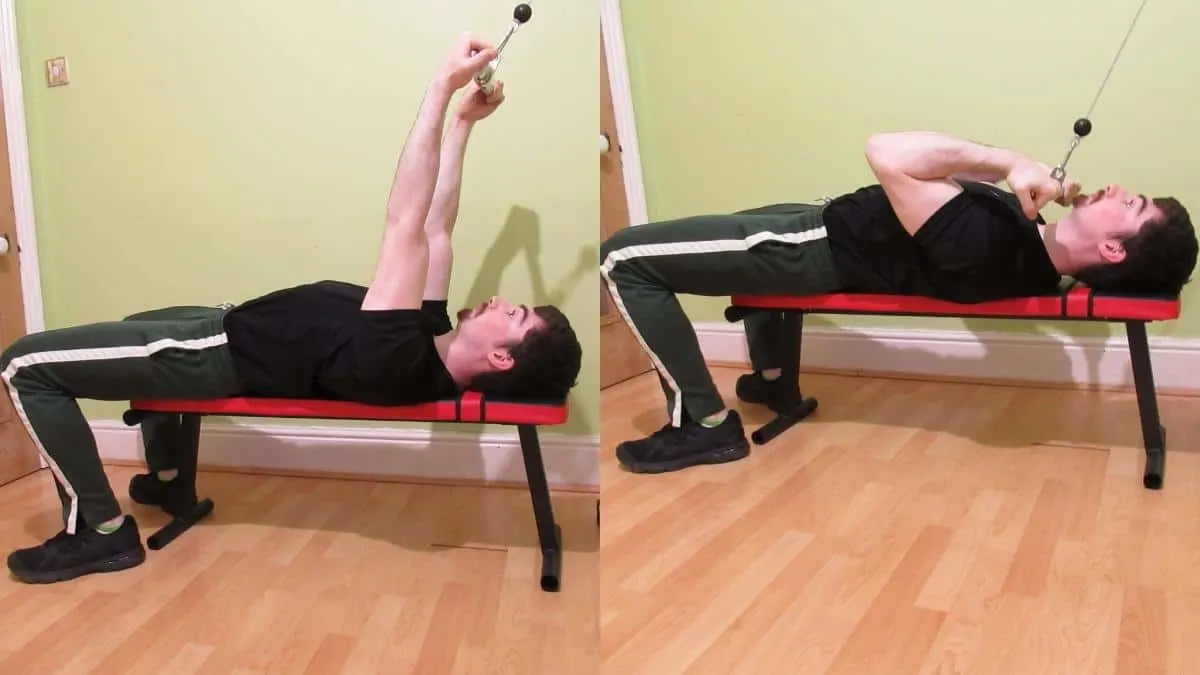The guillotine curl is a unique exercise that emphasizes the bicep short head and the peak contraction of the strength curve.
Although not as straightforward to set up and execute (if you’ll pardon the pun) as a regular cable curl, the guillotine curl works the biceps in a shortened anatomical position, which, as you’ll learn in a moment, has some very tempting muscle growth benefits that you’ll want to take advantage of.
How to do a guillotine cable curl
- Wheel a bench to a cable machine.
- Connect a straight bar attachment to a high pulley.
- Sit on the bench facing away from the machine and then grab the bar with an underhand grip.
- Lie on the bench—bar in hand—so that your forehead is directly under the high pulley.
- Curl the bar down toward your forehead and squeeze your biceps forcefully.
- Hold the contraction for a moment, and then let your biceps stretch out until your elbows are completely extended.
- Repeat for 3-4 sets of 12-15 reps.
Guillotine curl benefits
Usually, when an exercise has the word guillotine appended to it, you should steer well clear. However, the guillotine cable curl is different. While guillotine curls are definitely one of the more unique bicep exercises out there, they’re safe because you’re not actually bringing the bar to your neck (or at least you shouldn’t be).
Plus, even though you’re curling the bar to your forehead, the resistance is always trying to travel away from you back up to the pulley, so it’s not like any weights will fall on your head either.
Intense peak contraction
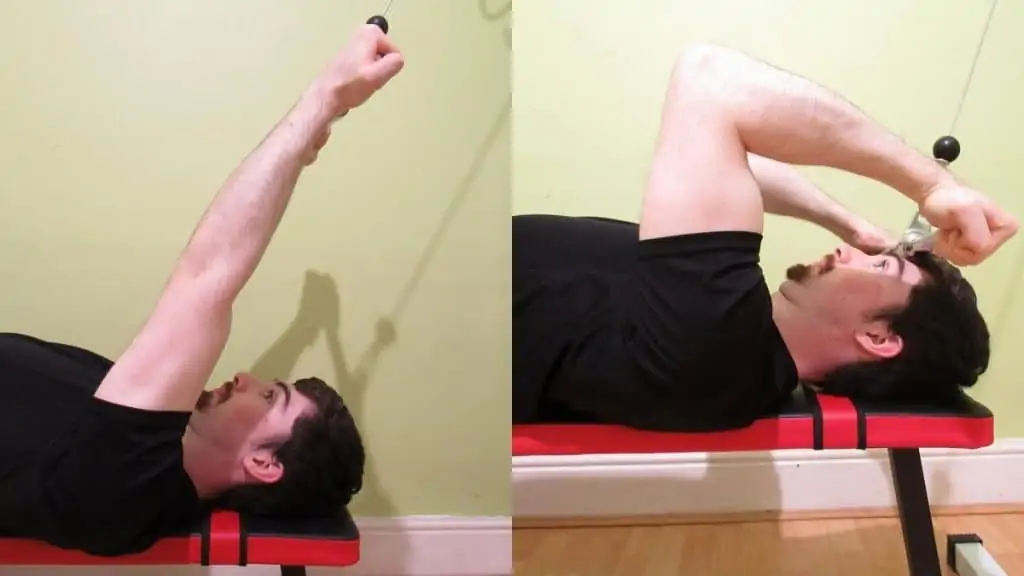
Guillotine curls work your biceps in a shortened anatomical position. You can think of this as the opposite of a stretch—instead of lengthening the muscle to reduce any built-up tension, you’re squeezing the fibers as hard as possible to engorge the muscle with blood. [1]
The intense peak contraction that lying guillotine curls naturally produce can help you to develop a stronger mind-muscle connection because it gets you used to maximally contracting your biceps against resistance.
This benefit carries over into your other bicep exercises and makes them more effective because now you’ll be able to get the most bicep stimulation from every contraction that you perform.
Also, by getting strong at the extreme (maximally shortened and maximally lengthened) positions of a muscle’s range of motion, exercises that train the mid-range, where you’re naturally strongest (like a standard barbell curl), will become easier. Thus, you’ll gain more muscle size because you’ll be able to lift heavier weights on these “mass-building” exercises thanks to your increased strength in the shortened muscle position.
Easier on your joints
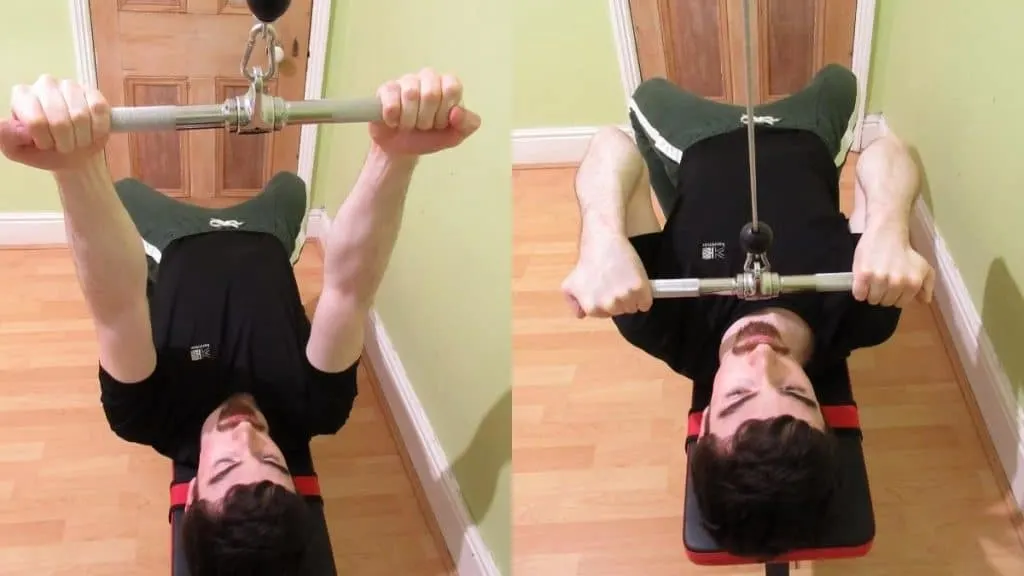
Free weights are far from dangerous when you lift them with the correct form. [2] However, because you’re 100% responsible for stabilizing them, your joints and connective tissue can still take a beating when you’re training with high volumes.
And it’s not like cables are a cure-all, either. But compared to free weights, they’re certainly a bit easier on the joints. What this means for you is that you can make gains faster by training more frequently (with cables) because your tendons and ligaments will be able to heal more quickly now that they’re not being constantly pounded by heavy iron.
Related Post: Cable bicep exercises
Better biceps short head
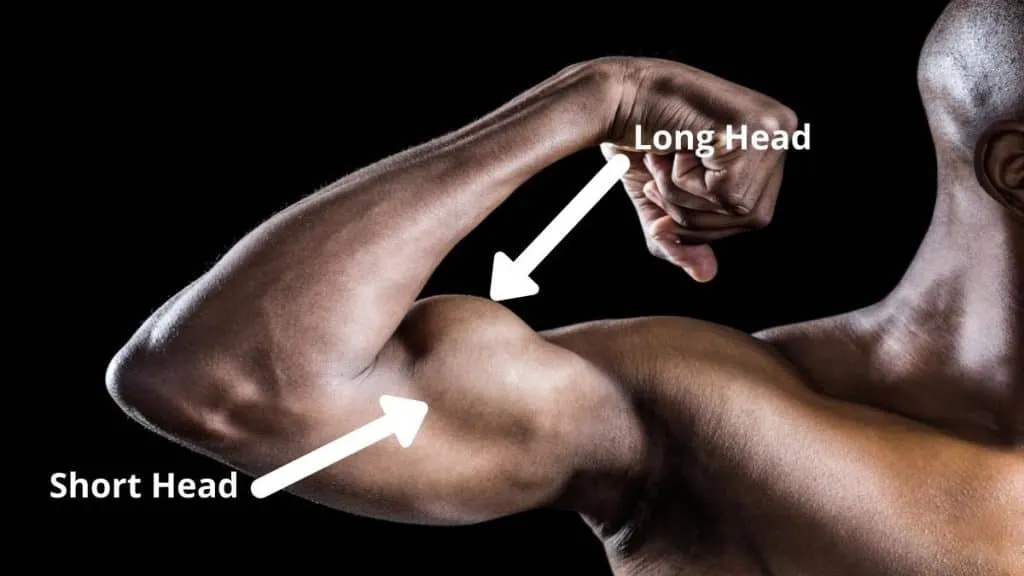
Any exercise that has you curl with your arms in front of your body generally emphasizes the short head of the biceps. This is the head that resides on the inner part of your arm, and it can really help to give your biceps that overall mass and thickness that many of us strongly desire.
The downside of the guillotine curl, in this regard, is that as you get stronger, you might find it hard to lie comfortably on the bench. This is so because the cable will always be trying to pull your body off the bench.
Therefore, if you don’t have rock-solid core strength, then you might want to perform the guillotine curl at the end of a workout to finish off your biceps when you’re obviously not going to be lifting as much weight.
Guillotine curl alternatives
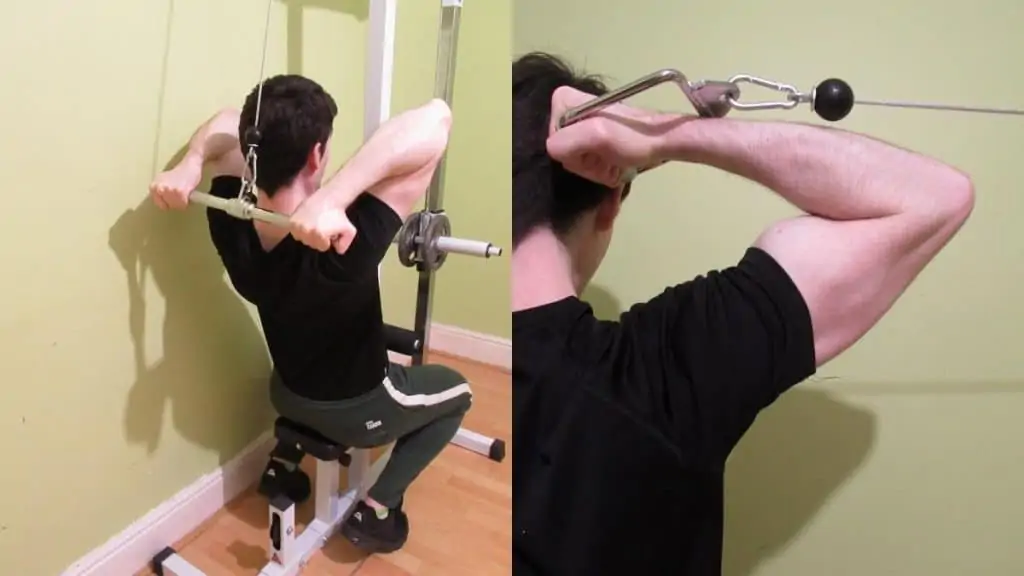
The cable lying concentration curl is very similar to the guillotine curl. And in some cases, depending on who you’re asking, it’s actually the same exercise. But for us, the execution is a bit different.
Rather than curling from a high pulley like in the guillotine variation, you’re curling from the cable’s low pulley with your arms by your sides. This naturally means that you can lift heavier weights because you’re not being pulled off the bench. Heck, you don’t even need a bench!
You can do the lying curl on the floor or on an exercise mat. As such, it’s more convenient than the guillotine curl (especially at peak gym times) because it can be a nightmare to wheel a bench from the free weight area without someone else taking your machine.
The reverse grip cable curl is another excellent alternative because it works the arm muscle that most lifters neglect—the brachioradialis. This muscle is critical if you’re a bodybuilder because it visually connects your lower arm to your upper arm, giving both regions a thicker, meatier look.
If you’re more old-school and just want to focus on creating overall bicep mass, then you can also perform the seated cable bicep curl. I actually prefer the lying version for building size, but some people can just lift heavier weights when seated, particularly if they lack the core stability to perform multiple sets of the guillotine curl.
The verdict: How effective are guillotine curls for building the biceps?
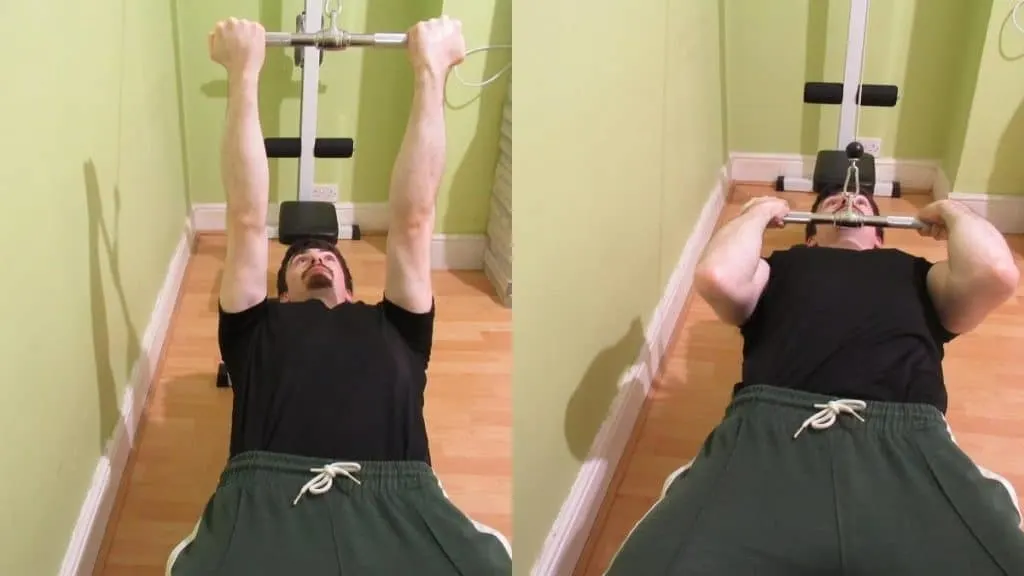
Although the guillotine curl may sound intimidating if you’re new to weight training, the exercise is actually very safe. For example, since the cable machine helps you to stabilize the weight somewhat, the guillotine curl is actually easier on your joints than many free-weight curl variations.
Just make sure to stick to high reps (12-20) so that your core strength doesn’t become the limiting factor. After all, the cable system will be trying its hardest to pull your body off the bench. But you can avoid this problem by using guillotine curls as a finishing exercise for your biceps at the end of a workout, when they’ll naturally be more fatigued.
References
- Concentric Muscle Contraction – an overview | ScienceDirect Topics. (2021). ScienceDirect. https://www.sciencedirect.com/topics/biochemistry-genetics-and-molecular-biology/concentric-muscle-contraction
- Laskowski, E. R. (2020, November 19). Weight training: Free weights vs. machine weights. Mayo Clinic. https://www.mayoclinic.org/weight-training/expert-answers/faq-20058479

